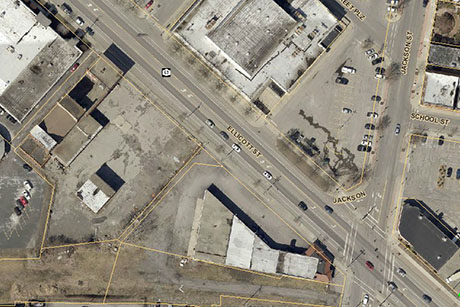Four concepts for city's north and south sides, all with main theme of housing
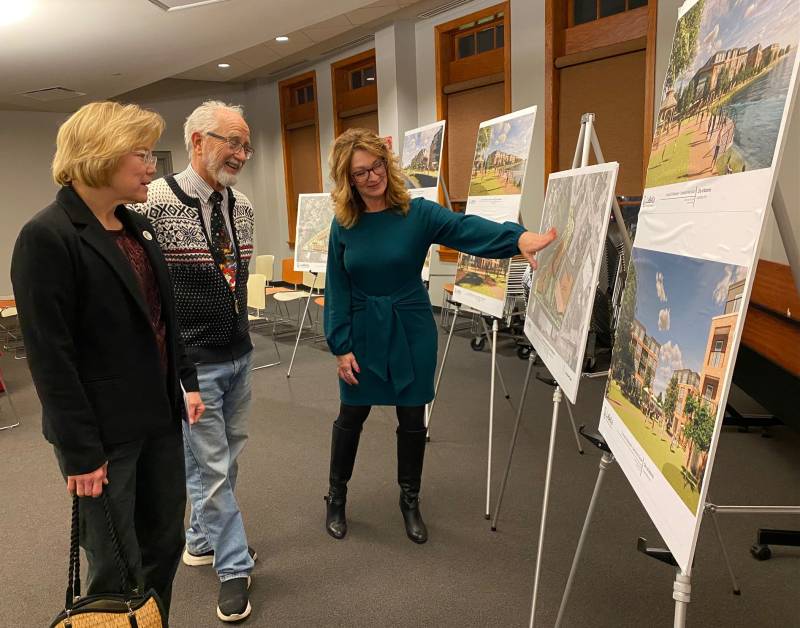
Photo by Joanne Beck
More than a dozen people showed up to the city’s brownfield opportunity area open house Monday, offering an overall thumbs-up for increasing the housing stock while also differing on items of concern, such as devouring too many parking spots, not considering community needs, and lack of privacy from looming apartment complexes.
After perusing the renderings for the Batavia City Centre parking lot adjacent to the Bank of America drive-through along Bank Street, Richard Beatty noted what was missing.
“Looking at the existing parking lot, I'm concerned about the public market; its location right now in the O’Lacy’s parking lot is not good. I think there's a battle between O’Lacy’s and Angotti’s and the other places for parking. And it's just really not a pleasant experience,” Beatty said during the event at City Hall. “Whereas at the market, its last year's location was all right, it was much better where the police station is now. But that's gone; that issue has flown away. So, yeah, I would like to see more focus on the public market space. I think that's a good draw to the city, good draw for vendors. So I don't see anywhere in this that takes a look at that.
“It should be downtown, somewhere, somehow. And I think that's where it draws people into the city, and they're going to go to other places when they're in downtown,” he said. “I like public markets. I think, you go anywhere around Western New York, you go to public market sites, they're popular.”
The plan is to build an apartment complex along Bank Street from the corner of Alva Place south, across from the police station. That would bring more of the urban back into the city and bring it closer to the street that urban renewal removed, said Ed Flynn, vice president of LaBella Associates and project consultant.
Flynn walked through all of the plans, beginning with Batavia Creek Side right behind the ice rink on Evans Street. There’s Concept A, with buildings closer to the water and to Ellicott Trail.
“This has the images of the concepts right here the trail is right next to where the market rate apartment would be. And then over here, this is kind of the view looking where the current gazebo is, and then there’s a space for a potential cafe as well,” he said. “Another concept (B) which has all the buildings kind of right next to them, not along the trail, and a little bit more green space. And the ice rink is a little bit to the south of the current ice rink right now, still the gazebo there, still a lot of green space.”
City resident Janice McFollins liked the first concept because the buildings were more separated and didn’t seem as crowded together. She and City Councilwoman Tammy Schmidt agreed that the rendering was more appealing, and Schmidt suggested that perhaps one row of buildings could be for tenants age 55-plus and the other set for families with children.
“I just think it is very nice looking,” McFollins said. “Very neat.”
They also liked the idea of a first-floor parking garage that would be part of the development, since nothing could be built on the first floor due to the flood zone, Flynn said.
He continued on with the tour of conceptual plans.
“And then over here we have some reorganization of the City Centre parking lot, a little bit more pedestrian friendly, a bit more efficient in terms of the traffic flow. And then potential liner buildings along Bank Street for potential apartments or more innovative retail on the first floor,” he said. “And then this is an idea for the former JC Penney site, which would also do some more housing as well, or hotel.”
The city doesn’t own the Penney’s building, and that is to go up for auction by the lender, but city officials are hoping that these concepts will help provide prospective developers with ideas and some plans to pursue, he and Batavia Development Corporation Director Tammy Hathaway said.
The parking lot is owned by the city, and there will be future discussion about the bank drive-through, Flynn said.
“So I still need to talk to the bank, have some conversations with them. The idea is they have kind of liner buildings like that between (Bank of America and the police station),” he said. “So more urban, more back to rebuilding the urban grid that used to be here.”
Taking up more parking spaces concerns RaeAnn Engler, treasurer for the GO ART! Board of Directors. She has seen how busy the parking lot can get and wonders how it would handle an apartment filled with tenants in need of parking spots.
“I’m a little concerned about that, and I'm not sure exactly what it's doing to parking space for people. I don't know if there's underground parking in these buildings the way they are over by the creek, so those people are going to need to park in that parking lot,” Engler said. “And what's it going to do to draw people downtown? A concern.”
Other aspects that people liked included:
- Creek Park Development (Concept A) looks great
- Underbuilding parking
- JC Penney/parking lot concepts
- Love apartments
Concerns included:
- Kayak/boat launch for Creek Park
- Perhaps some sort of incentive to property owners on the west of the creek to maintain their backyards
- Maybe condos
- No privacy for homes across the creek, junk in the creek
- What happened to the park that was going to be there?
- Where is the city snow going?
- How does this impact properties on the other side of the Tonawanda?
- Upkeep?
- Parking plan for Alva and Jefferson — don’t cut off access
- Is City Centre east parking shared between residents and visitors?
All public comments will be taken back to a committee to work out the “best use of this area, reinventing the area for revitalizing it,” Hathaway said.
“If we can incorporate them into changing any of the renderings, that's what we'll do. Then we'll change them. I would say it's going to happen in January … and then we'll probably do some sort of a press release after the public comments (to say) this is what we came up with,” she said. “It's really up to a developer, but this gives us guidance for a developer as to what the committee is determined is best use for an area.”
These latest comments will be combined with input from the county’s housing study this fall, and “we will put that all together,” she said. " All of our conversations going forward with developers will incorporate those thoughts.”
Have developers expressed interest in these projects? Hathaway takes a phone call from one at least once every other week, she said. Creek Park Batavia LLC cannot be sold just yet until the flood map and newly zoned floodway are settled and city officials have more answers from the Federal Emergency Management Agency, she said.
“So the city is waiting for answers to come back on the questions that they asked regarding the change in the floodway, how that impacts the area, if it was already in a flood zone, so developers know they've had to build a flood compliance,” she said. “But now you add on the extra engineering fees and everything because of the floodway. So we want to make sure that if there's any way that we can have something changed ahead of time, we want to do that.”
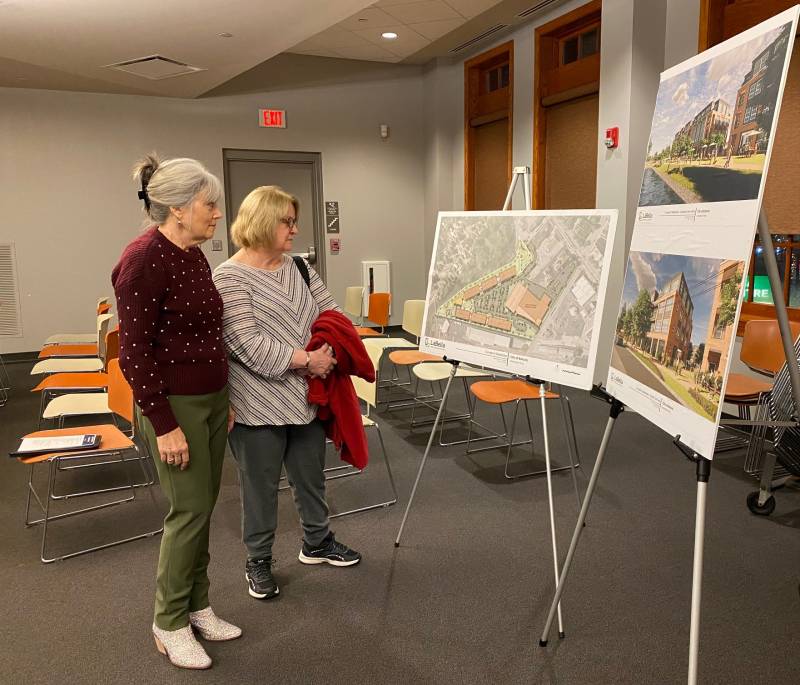
Photo by Joanne Beck
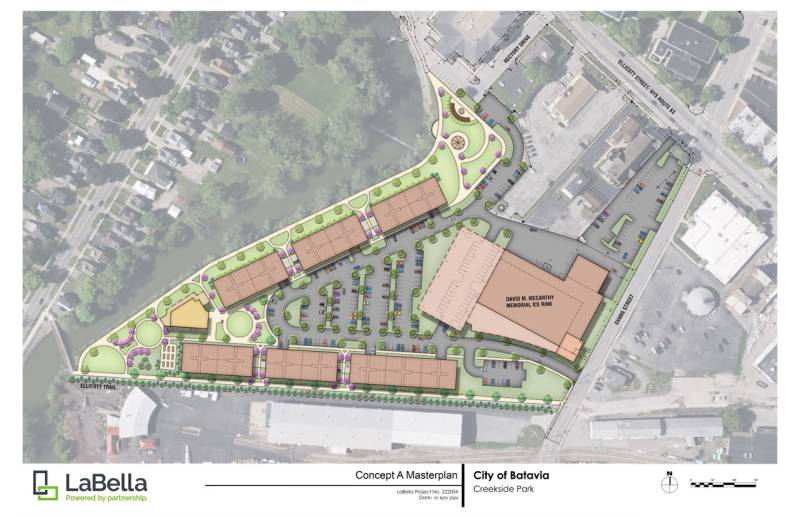
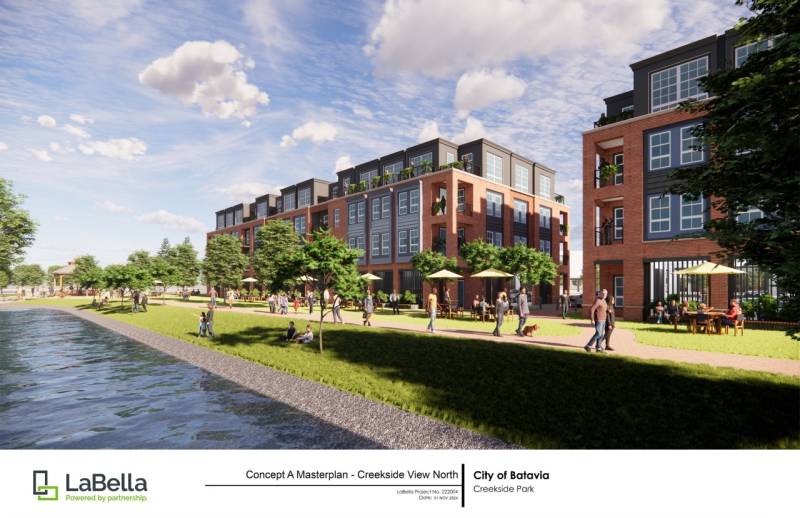


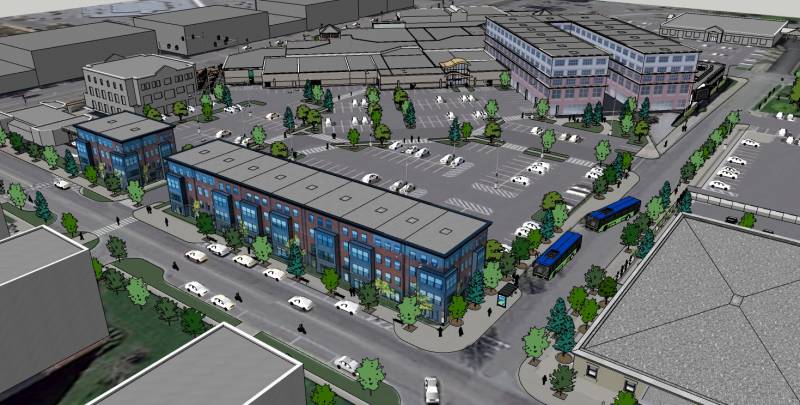
Submitted by LaBella Associates
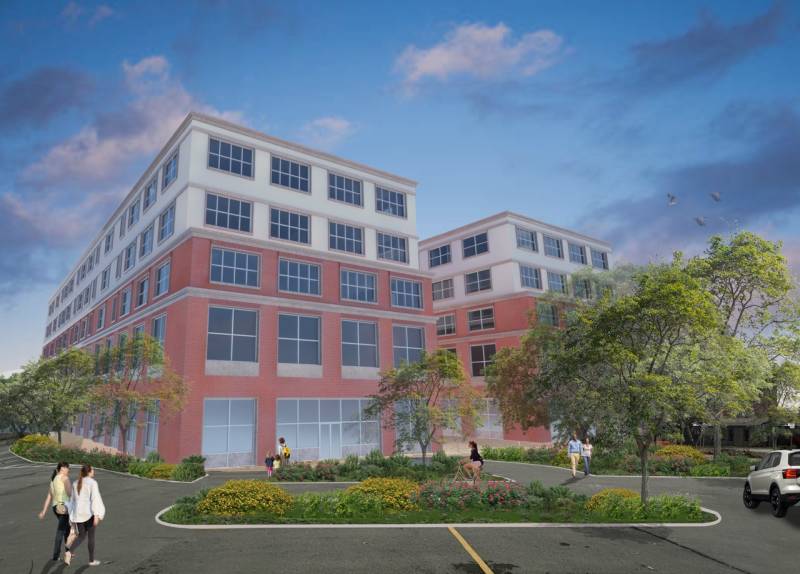
Submitted by Labella Associates

